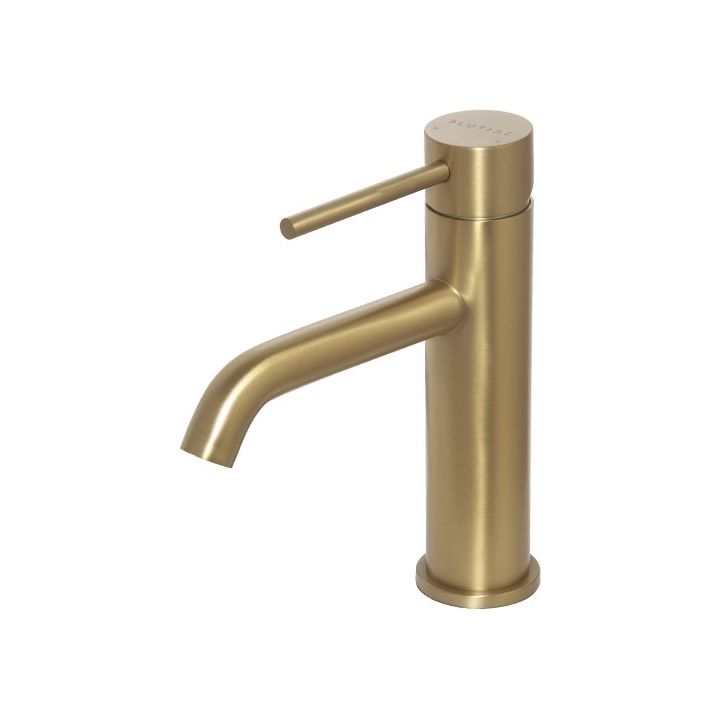
A Guide To Choosing the Right Bathroom Taps for Your Home
Introduction
When it comes to designing a bathroom, every detail matters, including the taps. These seemingly small fixtures play a significant role, not only in fulfilling their functional purpose but also in shaping the overall aesthetic and efficiency of the space. Selecting the right bathroom taps is essential for achieving a harmonious and well-balanced design that enhances both the look and functionality of the room. From traditional to modern styles, and from water-saving technologies to luxurious finishes, the options are vast, highlighting the importance of making an informed choice that aligns with your preferences and needs.
Understanding Bathroom Taps

Bathroom taps come in various types, each with its own unique features and functionalities. Here's an overview of some common types:
- Mixer Taps: Mixer taps combine hot and cold water to provide a single stream of water at the desired temperature. They are versatile and allow for precise control over water flow and temperature, making them popular choices for both baths and sinks.
- Pillar Taps: Pillar taps feature separate hot and cold water controls, with individual taps for each. They are often found in more traditional bathroom designs and offer a classic aesthetic with a separate tap for hot and cold water.
- Monobloc Taps: Monobloc taps feature a single lever or handle that controls both water temperature and flow. They are sleek and minimalist in design, offering a contemporary look that is popular in modern bathrooms.
Taps not only serve a practical function by providing water for washing and bathing but also act as design elements that contribute to the overall style of the bathroom. Whether you prefer a traditional, vintage-inspired look with intricate detailing or a sleek, modern design with clean lines and minimalist features, there are taps available to suit every taste and preference. By carefully selecting taps that complement the bathroom's aesthetic, you can enhance the visual appeal of the space and create a cohesive and inviting environment. Thus, understanding the different types of taps and their functionalities is essential for making informed decisions that align with your design vision and practical needs.
Styles of Bathroom Taps
Traditional Taps:
Traditional taps are perfect for classic or vintage-inspired bathroom designs, evoking a sense of timeless elegance. Features commonly found in traditional taps include:
- Cross-Head Taps: Characterised by cross-shaped handles, these taps offer a nostalgic charm reminiscent of bygone eras.
-
Ceramic Detailing: Taps with ceramic detailing, such as intricate patterns or floral motifs, add a touch of sophistication and refinement to traditional bathrooms.
Traditional taps often boast intricate craftsmanship and attention to detail, making them ideal for creating a cosy and inviting atmosphere in your bathroom.
Modern Taps:
For those with a penchant for contemporary design, modern taps offer sleek aesthetics and innovative features. Characteristics of modern taps include:
- Minimalist Designs: Clean lines, geometric shapes, and minimalist forms are hallmarks of modern tap design, lending a sense of simplicity and sophistication to the bathroom.
- Sleek Finishes: Modern taps often feature polished chrome or brushed nickel finishes, enhancing their sleek and streamlined appearance.
-
Innovative Shapes: From angular spouts to asymmetrical handles, modern taps embrace unconventional shapes and designs, adding a touch of avant-garde flair to the bathroom.
Modern taps are perfect for creating a minimalist and chic bathroom aesthetic, where form follows function and every detail is thoughtfully considered.
Specialty Taps:
For those seeking something truly unique and distinctive, specialty taps offer a range of options to suit specific needs or design preferences. Examples of specialty taps include:
- Waterfall Taps: These taps feature a wide spout that produces a cascading flow of water, creating a serene and spa-like ambiance in the bathroom.
-
Taps with Integrated LED Lighting: Adding a touch of drama and sophistication, taps with integrated LED lighting illuminate the water stream, creating a mesmerising visual effect.
Specialty taps serve as eye-catching focal points in the bathroom, infusing the space with personality and charm.
Choosing the Right Finish
Popular Tap Finishes:
- Chrome: Chrome finishes are versatile and timeless, complementing a wide range of bathroom styles from traditional to contemporary. They offer a sleek and polished appearance that is easy to clean and maintain.
- Brushed Nickel: Brushed nickel finishes have a soft, matte appearance that adds warmth and sophistication to the bathroom. They are ideal for creating a modern and luxurious ambiance.
- Matte Black: Matte black finishes make a bold statement in the bathroom, adding a touch of drama and contrast to the space. They are perfect for creating a sleek and contemporary look with a hint of edgy sophistication.
-
Brass: Brass finishes exude vintage charm and elegance, lending a sense of warmth and character to the bathroom. They are perfect for creating a traditional or rustic-inspired aesthetic.
Matching Tap Finishes with Other Fixtures:
When selecting tap finishes, consider coordinating them with other bathroom fixtures such as towel bars, showerheads, and cabinet hardware for a cohesive and harmonious look. Opt for finishes that complement each other and enhance the overall design aesthetic of the bathroom.
Technology and Innovation in Taps
Water-Saving Taps:
Modern taps incorporate advanced technologies such as aerators and flow restrictors to reduce water usage without sacrificing performance. These features help conserve water and lower utility bills while maintaining a consistent and satisfying water flow.
Touchless Taps:
Touchless taps utilise motion sensor technology to activate the flow of water, promoting hygiene and reducing the spread of germs and bacteria. By eliminating the need for physical contact, touchless taps offer convenience and peace of mind for users.
Temperature Control Features:
Innovations such as thermostatic controls ensure a safe and comfortable bathing experience by maintaining a constant water temperature, thus preventing scalding. These features are particularly beneficial for households with young children or elderly individuals.
Water Efficiency Considerations
Importance of Water Efficiency:
Choosing water-efficient taps is essential for reducing water consumption and minimising environmental impact. Look for taps with high-efficiency ratings or certifications such as WaterSense, which indicate superior performance and water savings.
Identifying Water-Efficient Taps:
When selecting taps, check for features such as low-flow aerators, which help reduce water usage without compromising water pressure. Additionally, consider taps with adjustable flow rates or eco-friendly design features that promote water conservation.
By prioritising water efficiency in your tap selection, you can contribute to sustainable living practices while enjoying a stylish and functional bathroom environment.
Practical Tips for Choosing Bathroom Taps
Choosing the right bathroom taps goes beyond just aesthetics; it involves considering various factors to ensure functionality, compatibility, and efficiency. Here are some practical tips to guide you through the selection process:
Consider Factors like Water Pressure and Plumbing Compatibility:
- Water Pressure: Assess the water pressure in your bathroom to determine the type of taps that will work best. Some taps are designed for high-pressure systems, while others are suitable for low-pressure systems. Ensuring compatibility with your water pressure will ensure optimal performance.
- Plumbing Compatibility: Take into account the existing plumbing setup in your bathroom. Consider whether you need to replace the entire faucet system or if you can simply upgrade the taps. Compatibility with existing plumbing will streamline the installation process and minimise additional costs.
Ease of Use, Especially for Specific User Needs:
- Household Members: Consider the needs of all household members, including children and elderly individuals. Opt for taps with easy-to-use handles or levers that are accessible to everyone. Features such as lever handles or touchless technology can make operation easier for those with limited dexterity.
- Functionality: Choose taps with features that enhance functionality and convenience, such as swivelling spouts or pull-out sprayers. These features can make daily tasks like washing hands or cleaning the sink more efficient and comfortable.
Guidance on Budgeting for Bathroom Taps:
- Upfront Costs vs. Long-Term Savings: When budgeting for bathroom taps, consider both the upfront costs and the potential savings in the long run. While high-quality taps may have a higher initial investment, they can lead to savings on water bills over time, especially if they incorporate water-saving technologies.
- Quality vs. Price: Prioritise quality when selecting taps, as cheaper options may require more frequent replacements or repairs, ultimately costing you more in the long term. Invest in taps made from durable materials and backed by reputable brands for lasting performance and reliability.
Maintenance and Care
Maintaining your bathroom taps is essential to ensure their longevity and optimal performance. Here are some maintenance tips to keep your taps in top condition:
Regular Cleaning and Descaling Practices:
- Clean your taps regularly with a mild soap solution and a soft cloth to remove dirt, grime, and water spots. Avoid harsh chemicals or abrasive cleaners that can damage the finish.
- Periodically descale your taps to remove mineral deposits and limescale buildup. Use a descaling solution or a mixture of vinegar and water to dissolve stubborn deposits. Rinse thoroughly afterward to prevent residue buildup.
Addressing Common Maintenance Issues:
- Dripping Taps: If your tap is dripping, it may indicate a worn-out washer or cartridge. Replace these components to stop the leak and prevent water waste.
- Low Water Pressure: Low water pressure can be caused by clogged aerators or sediment buildup in the tap. Remove and clean the aerator or seek professional assistance to address the underlying issue.
- Leaking Connections: Inspect the connections between the tap and the plumbing for signs of leaks. Tighten loose fittings or replace worn-out seals to prevent water damage.
When to Seek Professional Help:
- If you encounter complex maintenance issues or if DIY attempts are unsuccessful, don't hesitate to seek professional assistance. A licensed plumber can diagnose and address underlying plumbing problems and ensure proper installation and repair of taps.
Conclusion
Selecting the right bathroom taps requires careful consideration of factors such as water pressure, plumbing compatibility, ease of use, and budget constraints. Balancing style, functionality, and water efficiency will ensure you make an informed choice that enhances the overall design and functionality of your bathroom.
By prioritising maintenance and care, you can prolong the lifespan of your taps and ensure they continue to perform optimally for years to come. Regular cleaning, descaling, and timely repairs will help prevent common issues and maintain the integrity of your taps.
Ultimately, choosing bathroom taps is a personal decision that should reflect your individual needs, preferences, and the overall design aesthetic of your bathroom. By following these practical tips and taking your time to explore various options, you can find taps that not only complement your bathroom but also enhance your daily routine with style and efficiency.
